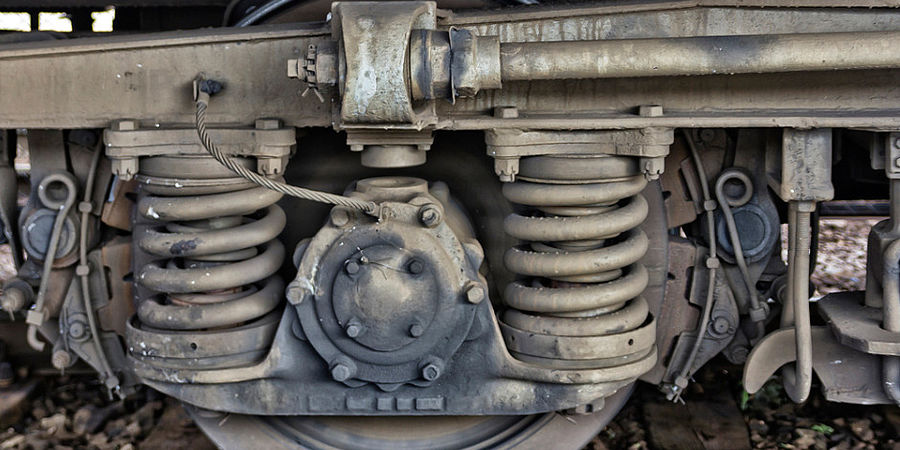Testing for safer suspension systems

Challenge
Many civil engineering and transportation projects require devices that can dampen vibrations and absorb shocks. Spring mechanisms can be used for this purpose and are commonly found in applications ranging from high-rise buildings to car suspension systems. Railway carriages, for example, have spring damper systems placed between the axle and the undercarriage. These allow the entire train to travel smoothly at high speeds and also ensures passenger safety by maintaining contact between the carriage’s wheels and track.
Mechanisms used to limit unwanted movements, whether preventing buildings swaying during earthquakes or carriages moving at speed along tracks, play a vital role in ensuring public safety and must be tested for their ability to withstand the considerable forces experienced in service. A problem with testing springs is the distortion caused to their shape as they are squashed. This can significantly change the way test loads are applied leading to inaccurate results. Any mis-alignment of the test machine is amplified by spring distortion during testing. This creates a major source of measurement error. Reliably assessing spring performance requires improved methods for monitoring test machine alignment.
Large machines capable of providing testing at the extremely high loads anticipated in use cannot be moved to calibration labs for performance confirmation, so devices are required to transfer links to the SI units to them. Greater accuracy in the calibration of these devices and ways to assess any machine mis-alignments are needed to ensure high load testing provides reliable results to underpin safety assessments.
Solution
The EMRP project Force traceability in the meganewton range developed a novel high-load measurement device based on six transducers, instruments that convert force to an electrical output, arranged to record all the forces that operate during spring testing. To establish robust links to SI units, this hexapod’s performance was validated by comparison to another well-characterised highload measurement transfer device. By using the hexapod it is now possible to check the alignment of machines used for high load testing and to measure forces acting in other directions to that applied by the machine during spring testing.
Impact
EasyDur Italiana, manufactures high load test machines for assessing the performance of springs used in the automotive and rail transport sectors. They are already preparing the hexapod for commercialisation to give their customers a reliable method for confirming test machine alignment and calibrations on an ongoing basis. For the first time it is now possible to reliably assess the effect of the side loading experienced by springs in service. As a result there is now a method for manufacturers of springs used in rail carriages and the train operators that provide a public service to rigorously demonstrate that their springs conform to European safety standards for suspension systems.
Many areas of civil engineering and transportation rely on spring loaded mechanisms to dampen movements. These will now be able to demonstrate that device and material performance meet the safety standards required by EU Directives so helping to sustain Europe’s impressive safety record.

